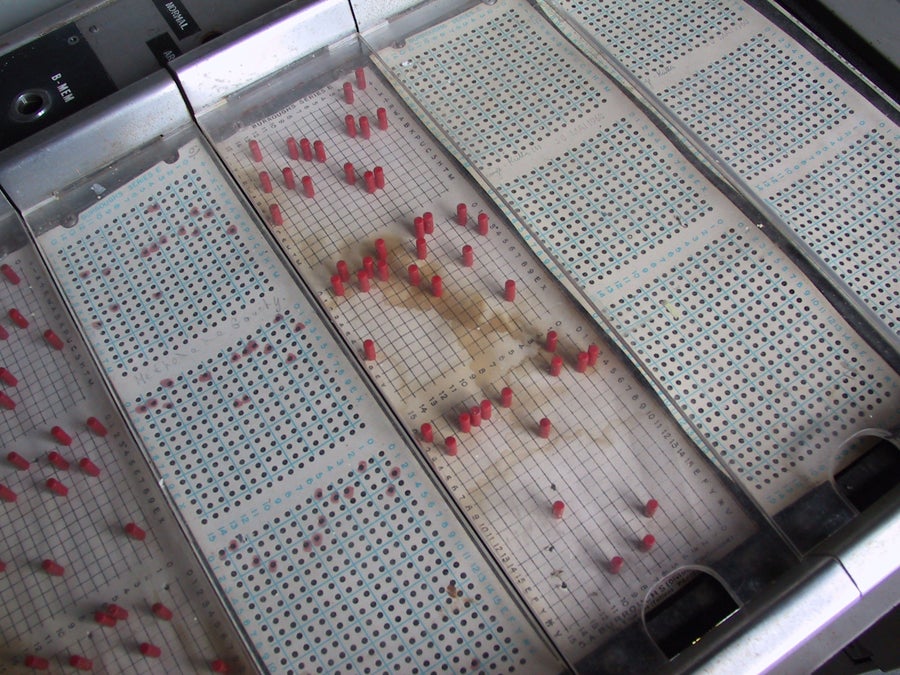
Georges Lemaître was passionate about numerical calculation and gravitated toward powerful machines for carrying it out. Late in his career, as he began offloading some of his teaching responsibilities at the Catholic University at Louvain (UCL), he became increasingly absorbed by calculation.
Using electromechanical machines, Lemaître computed the frequencies and vibration modes of the monodeuteroethylene molecule as part of project headed by Hugh Taylor, a chemist at Princeton University. In 1958, Lemaître introduced and programmed UCL’s first electronic computer – a Burroughs E 101.
This was not a desktop computer, but a desk-sized computer designed for bookkeeping. It had punched paper-tape input, 160 vacuum tubes, 1,800 diodes, and about 2 kilobytes of memory. Today, there’s thousands of times more computing power in a low-end cell phone. But, in its day, the E 101 and machines like it were the top dogs of numerical computing.
In 2006, UCL’s High-Performance Computing and Mass Storage Institute acquired a new 300-processor Beowulf computer cluster. Not surprisingly, the group dubbed its powerful new hardware “Lemaître.”









